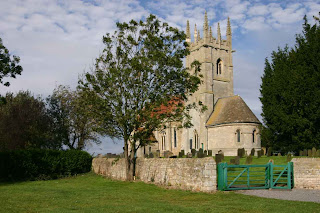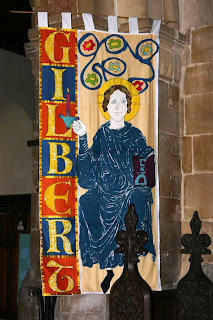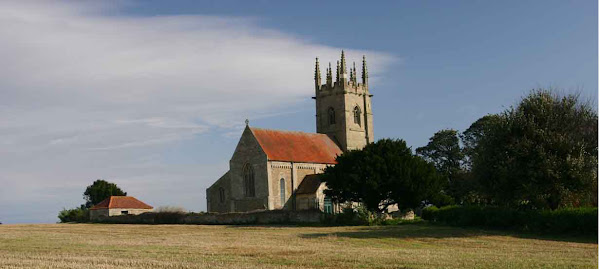The next time you're driving through the fens of Lincolnshire, take the A15 north from Bourne about 15 miles to the B1177. Continue driving north through the town of Pointon. You might want to get a bite to eat at The Old Ship Inn.

Order your meal at the bar, find a comfortable seat, and your food will be delivered to you.
When your appetite is sated, continue driving north a short distance, and look for the hamlet of Sempringham. If you reach Billingborough, you've gone too far. I should warn you that about all you'll see of Sempringham is a road sign. There are a few farm buildings and cottages in the area, but you've seen farm buildings and cottages for miles.
When you find that Sempringham road sign, pull over to the side and look to the west. Off in the distance, peeking above a stand of trees about a mile off, you will see a small church:

Look for a dirt road that leads back to the church. Take it. When you get to the end, you'll be at St. Andrew's, an

As you stand regarding the Norman-to-Victorian architecture in front of you, consider that this was the birthplace of the Gilbertines, England's only native monastic order. St. Gilbert himself worshipped here, and lived past the age of 100 in a monastery that once rose from the farm field to the south.


Princess Gwenllian, the last Princess of Wales who was actually Welsh, lived most of her life, basically a captive, at the monastery here in the 13th century.
During the reign of Henry VIII, the monastery was torn down in a period called the Dissolution of the Monasteries. The stones were taken away and used in other buildings.
But the church lived on, and a century later was a center of the group of Puritans who founded the Massachusetts Bay Colony in the 1620's and 1630's. The pastor at St. Andrew's, Samuel Skelton, was elected the first minister of the first Puritan church in Massachusetts, in what was the first secret written ballot in the English colonies. Sitting in his congregation at Sempringham was the teenaged Anne Dudley, who was to become Anne Bradstreet, the first published poet in the English colonies.
But hard times fell on Sempringham. The Dissolution of the Monasteries dealt a heavy blow to the town. The enclosure movement forced people to leave their homes. And in time the little church of St. Andrew's was all that remained.

